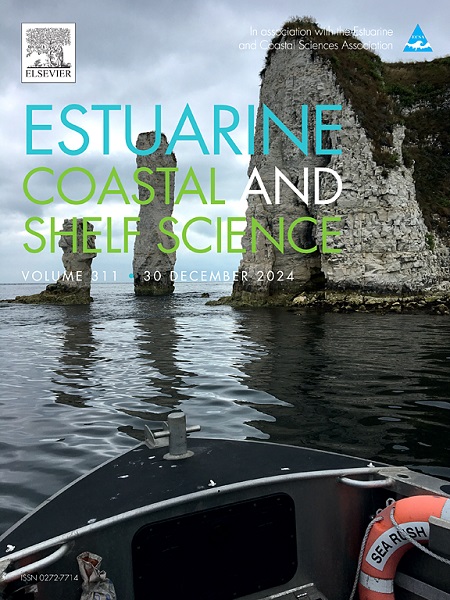Ecological restoration measures for shallow coastal habitats of the Baltic Sea and the Skagerrak – effectiveness, costs and knowledge gaps
IF 2.6
3区 地球科学
Q1 MARINE & FRESHWATER BIOLOGY
引用次数: 0
Abstract
Human-induced pressures are interfering with the environmental status of marine and coastal areas impacting their ability to maintain ecosystem functions and services. In combination with planning and conservation measures to halt ongoing biodiversity loss, there is a need for developing and adapting toolboxes for active and passive restoration. Such habitat-specific restoration measures need to be tailor-made to strengthen the ecosystem services we depend on and to increase the resilience to climate change and other pressures. Today, there is a knowledge gap both regarding potential restoration measures and in the follow-up and evaluation of the effectiveness of existing measures. There is also a lack of general guidance about which measures are the most functional ones. Such knowledge is of utmost importance for implementation of the EU nature restoration law.
Here, we provide an overview of eight marine/coastal active and passive restoration measures relevant and applicable for the Northeast Atlantic, focusing on the Baltic Sea and the Skagerrak region. The measures reviewed foremostly aim at reversing negative impacts from physical disturbance on coastal habitats, focusing on active restoration of eelgrass beds, macrophyte beds on soft sediment, rocky-shore macroalgal beds, blue mussel reefs, stony reefs, as well as coastal wetlands and flads/lagoons. Two passive restoration methods are also reviewed, including strengthening populations of predatory fish and undertaking habitat protection. When relevant, these measures are reviewed with regard to type of restoration target, threats, benefits from restoration, restoration measures/methodologies and documented effects, pertinent geographical areas, approximate costs and possible additional information/key knowledge gaps. Among the measures reviewed, three stand out as having especially low costs per area/effort, i.e., 1) restoration of coastal wetlands and flads/lagoons, 2) strengthening populations of predatory fish and 3) habitat protection. We further conclude that there is a general lack of evidence for the cost-effectiveness of measures and that even the more costly measures may still bring more benefits than costs. Nevertheless, many measures are still understudied, provide limited positive effects in relation to their costs, are hard to upscale, have geographical limitations for a broader use or are sensitive to poor environmental status and continued environmental degradation. Additionally, all measures continuously need various degrees of development and fine tuning in order to improve success rates and value for money. The results are intended to support management in this maritime region and they are also applicable to other areas where the studied or similar habitat types exist.
波罗的海和斯卡格拉克浅海沿岸栖息地的生态恢复措施——有效性、成本和知识差距
人为造成的压力正在干扰海洋和沿海地区的环境状况,影响其维持生态系统功能和服务的能力。结合规划和保护措施,制止正在发生的生物多样性丧失,需要开发和调整主动和被动恢复的工具箱。这种针对特定栖息地的恢复措施需要量身定制,以加强我们所依赖的生态系统服务,并提高对气候变化和其他压力的适应能力。今天,在潜在的恢复措施以及对现有措施有效性的后续行动和评价方面都存在着知识差距。对于哪些措施是最有效的措施,也缺乏一般性的指导。这些知识对于实施欧盟自然恢复法至关重要。本文以波罗的海和斯卡格拉克地区为例,概述了八项与东北大西洋相关和适用的海洋/沿海主动和被动恢复措施。这些措施的主要目的是扭转自然干扰对沿海生境的负面影响,重点是积极恢复大叶藻床、软质沉积物上的大型植物床、岩岸大型藻床、蓝贻贝礁、石质礁以及沿海湿地和滩涂/泻湖。综述了两种被动恢复方法,即加强掠食性鱼类种群和保护栖息地。在相关情况下,对这些措施进行审查,包括恢复目标的类型、威胁、恢复的益处、恢复措施/方法和记录的效果、相关的地理区域、大致成本和可能的额外信息/关键知识差距。在审查的措施中,有三项措施的单位面积/努力成本特别低,即1)恢复沿海湿地和湿地/泻湖,2)加强掠食性鱼类种群和3)保护生境。我们进一步得出结论,普遍缺乏证据证明措施的成本效益,即使是成本更高的措施也可能带来更多的收益。然而,许多措施仍未得到充分的研究,就其费用而言产生的积极影响有限,难以提高,对更广泛的使用有地理限制,或对恶劣的环境状况和持续的环境退化很敏感。此外,为了提高成功率和物有所值,所有措施都需要不断地进行不同程度的开发和微调。研究结果旨在为该海域的管理提供支持,同时也适用于其他存在研究或类似生境类型的地区。
本文章由计算机程序翻译,如有差异,请以英文原文为准。
求助全文
约1分钟内获得全文
求助全文
来源期刊
CiteScore
5.60
自引率
7.10%
发文量
374
审稿时长
9 months
期刊介绍:
Estuarine, Coastal and Shelf Science is an international multidisciplinary journal devoted to the analysis of saline water phenomena ranging from the outer edge of the continental shelf to the upper limits of the tidal zone. The journal provides a unique forum, unifying the multidisciplinary approaches to the study of the oceanography of estuaries, coastal zones, and continental shelf seas. It features original research papers, review papers and short communications treating such disciplines as zoology, botany, geology, sedimentology, physical oceanography.

 求助内容:
求助内容: 应助结果提醒方式:
应助结果提醒方式:


